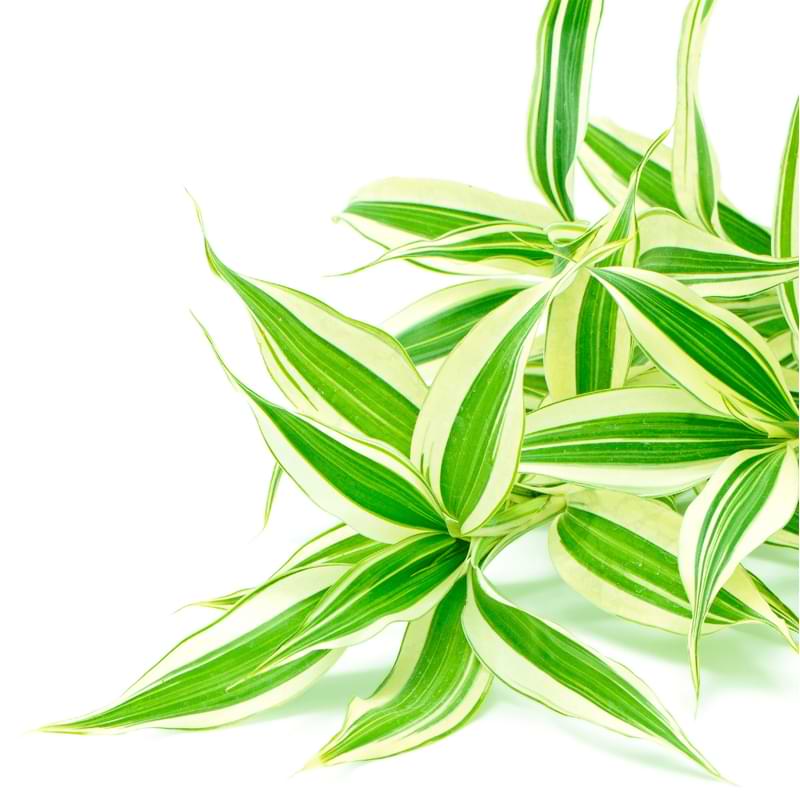Dracaena, commonly known as dragon tree, is another winner in the beginner-friendly houseplant department. They’re actually small trees or shrubs and lots of fun with their long, ribbon-like leaves. They almost look like something from a Dr. Seuss book!
Native to subtropical climates, dracaena is actually a member of the asparagus family. There are many different varieties of dracaena, but two of the most popular indoor varieties include Song of India (Dracaena Reflexa) with its beautiful yellow-edged leaves, and Dragon Tree (Dracaena Marginata) with red-edged leaves.
They’re very forgiving plants and thrive in room-temperature, moderately lit environments (AKA indoors) and they’re great for improving air quality in your home. They can grow up to ten feet, but they’re easy to control because they respond so well to pruning. I understand if you don’t want a ten-foot tree in your house!
They’re also drought-resistant, which is great news if you forget to water your plants. Whether you’re a houseplant beginner or a seasoned pro, and dragon tree is a gorgeous addition to your home!
Note: Dracaena is toxic to cats and dogs, so keep it out of reach or choose a different houseplant.

Table of Contents
How to Care for a Dracaena
Soil
Like many easy-to-care-for indoor plants, dracaena likes rich, but well-draining soil in a pot with good drainage. Regular indoor plant potting mix works beautifully!
Light
Draecana likes bright, but indirect sunlight. They do best in a sunny room, but not right in the window or in direct sunlight.
Water
You definitely don’t want to overwater this plant, so err on the light side if you aren’t sure how much water to give it.
A good rule is to let the top inch or so of soil dry out between waterings. If the leaves droop, you’re probably overwatering it.
One more thing: these plants don’t like fluoride, so if your local municipal water contains fluoride, let the water sit overnight before watering your plant or use distilled water. If you notice brown leaves or dead areas, your dracaena may be experiencing fluoride toxicity.
Pruning
If your plant gets too tall, you can simply cut off the top! It will start sprouting new leaves within a few weeks! You can also prune dead leaves with no problem.
Temperature
These plants are fairly forgiving, but they don’t like temperatures below 60 degrees Fahrenheit. Keep it away from cold windows or cooling vents and you should be fine.
Fertilizer
Choose a good 10-10-10 fertilizer and add it every two weeks during the growing season (spring and fall).
Or you can simply add Indoor Plant Food every time you water, which is what I do. I love it because I don’t have to remember a fertilizing schedule and I can use it on all my plants, aside from the succulents. This takes all the guesswork out of fertilizing and makes caring for plants easy!
Pretty simple! This is a good step up if you’re already caring for succulents or a snake plant and want to add another low-maintenance plant to your collection.
You’ll become a houseplant pro in no time!




